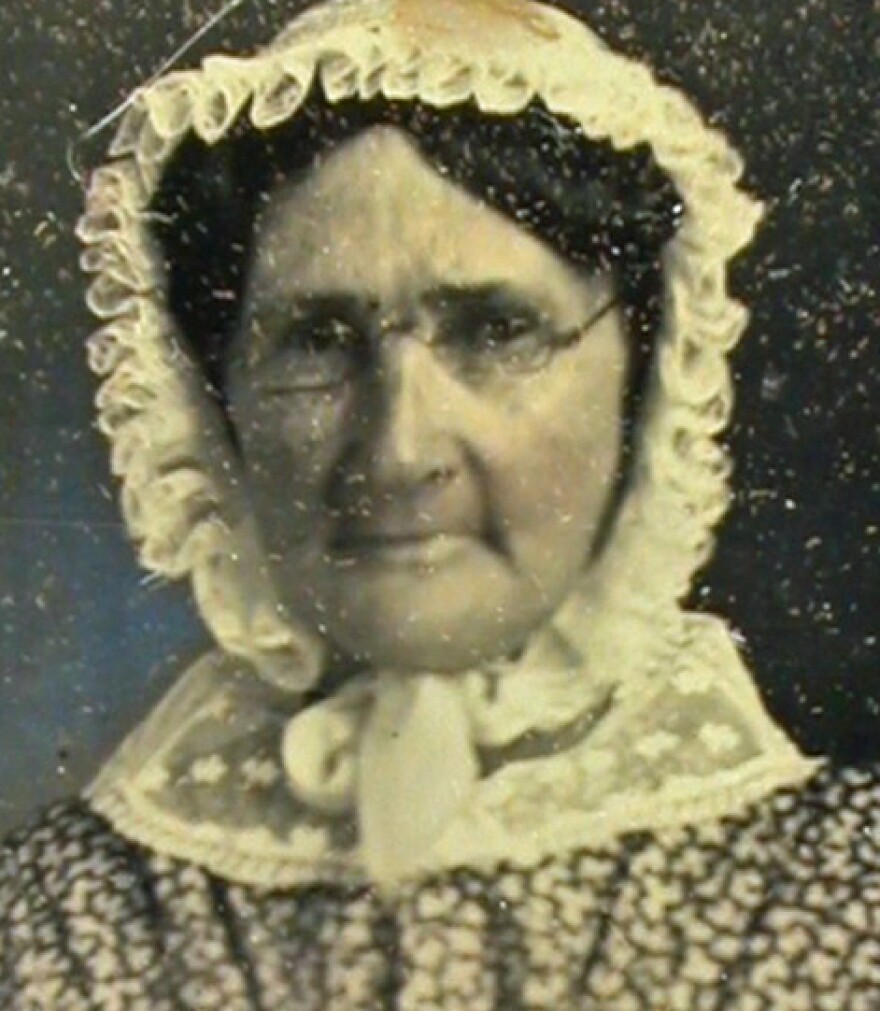I thought I knew all about Cincinnati’s firsts — from John Roebling’s Suspension Bridge, professional baseball and Play-Doh to the first Jewish hospital, municipal university, night baseball game, and licensed public TV station.
Now I’ll add the development of American photography to the list after previewing the first episode of The Big Picture: A History of Photography in Greater Cincinnati.
Capturing Life (1839-1869), which premieres 6 p.m. Wednesday at the Cincinnati Museum Center as part of the FotoFocus events around town, is packed with fascinating facts, events and surprising connections. I anticipated seeing historic photos of abolitionist Frederick Douglass, the Suspension Bridge and the Civil War. I didn’t expect to see telegraph inventor Samuel Morse, landscape painter Robert S. Duncanson, or Mammoth Cave.
All have connections to what made “Greater Cincinnati the center for the development of American photography,” according to the film written and directed by local filmmaker Tom Law.
In spring of 1839, months after two vastly different photography processes were announced in France and England, Cincinnati’s Dr. John Locke began some of this country’s first photo experiments with paper photographic negatives.

“Dr. John Locke, like so many early figures in photography, was a botanist. He was a chemist. He was a medical doctor. He was a geologist. He was eventually a professor at the medical college here in Cincinnati… He is known to have successfully made paper photographic negatives,” says Nathaniel Stein, Cincinnati Art Museum curator of photography, in the film.
Locke’s calotype (or “photogenic drawing”) process images were displayed in 1839 in a Third Street bookstore Downtown, “the first photographs ever exhibited in the United States,” says the film’s narrator, Aaron Sharpe.

By 1841, Cincinnati had its first daguerreotype photo studio, which used the process invented by Louis Jacques Mande Daguerre of Paris, France. Within nine years, there were 32 daguerreotype studios employing more than 78 people, according to Law’s research.
One of the first local daguerreotype photographers was Ezekiel Cooper Hawkins, who was mentored by Morse, the telegraph inventor. But two other men — Charles Fontayne and William Porter — became world renowned with their eight-panel panorama of Cincinnati’s riverfront, "A Daguerreotype View of Cincinnati," shot from a Newport rooftop on Sept. 24, 1848.
“It’s gorgeous, with almost limitless detail. It’s an amazing accomplishment,” Stein says.
The clarity of the daguerreotype presents a stunning view into the past — the architecture, the homes, the time of day (1:55 p.m.), the Miami-Erie canal bridge, people, animals, and 32 named riverboats.
“What you can learn from the panorama is really endless, depending on what you’re wanting to look at. Historically you could see the way people were living in 1848,” says Chris Smith, reference librarian at the Cincinnati and Hamilton County Public Library, which has the 1848 photo. “If you’d gone back 50 years in time, there wouldn’t have been riverboats on the Ohio River. But in 1848, it was the super highway heading West. This photo captures America at this time.”

Capturing Life includes fascinating historic photos of the Tyler Davidson & Company’s Downtown headquarters (1851); writer Harriet Beecher Stowe (1852); an enslaved woman (1853); Miami University (1858); and abolitionists Levi Coffin (1853) and Frederick Douglass (1867).
Coffin was photographed by James Presley Ball, an internationally known African-American photographer in Cincinnati (1840s-1871) who produced over 1,000 photographic images. His Great Daguerrian Galley of the West was “one of the most successful studios in America,” says the film’s narrator. Ball also employed artist Duncanson in 1868 to tint photographs with colorization.
Ball’s huge achievement, however, was commissioning a huge painted panorama of slavery and slave trade. And I mean huge — it was 12-feet high and 1,800-feet long.

"Ball’s Mammoth Panorama of American Scenery," which premiered in Cincinnati in March 1855, "documented the slave trade from its beginning in Nigeria, in West Africa, down through the southern ports of Charleston and New Orleans, up the Mississippi to the Ohio, and finally to freedom in Queenston, Canada,” says Theresa Leininger-Miller, University of Cincinnati professor of art history.
“This was a mind-blowing panorama. It was a huge painting wound on two cylinders. It would take two to two-and-a half hours to see all the scenes, and there would be a narrator describing the scenes as they’d unfold,” Miller says.
The one-hour film also devotes segments to one of the first female photographers, Minerva Corwin of Lebanon; Civil War photographers Charles Waldack and Isaac Bonsall; and pictures of an 1869 lunar eclipse shot for the Cincinnati Observatory.
After the war, Waldack earned international fame in 1866 for shooting the first pictures in a cave by using flaming magnesium tapers.
“Greater Cincinnati served as a major center for the development of American photography for its first three decades of existence. Innovative scientists, artists and entrepreneurs created a rich photographic heritage, a magnificent visual record that documents our region’s history, reveals our humanity and retains our collective memory for future generations,” says Law’s narration.

Additional free screenings of Capturing Life are planned for 5 p.m. Thursday, Oct. 17, at Northern Kentucky University’s Griffin Hall digitorium, and 6 p.m. Tuesday, Oct. 29, in the Huenefeld Tower Room at the main Cincinnati and Hamilton County Public Library Downtown. Advance registration is not required.
The Big Picture: A History of Photography in Greater Cincinnati is a three-hour documentary series produced by Voyageur Media Group Inc., a 501 c3 nonprofit organization dedicated to the creation of public media about science, history and culture. There also will be a companion website with additional information and educational materials.
After the three public screenings this month, Voyageur will offer Capturing Life (1839-1869) to public TV stations in Cincinnati, Dayton, Columbus and Kentucky for broadcast and streaming. It will be posted on the Voyageur Vimeo Pro website for free viewing and download for research and educational use after the public TV window, he says.




